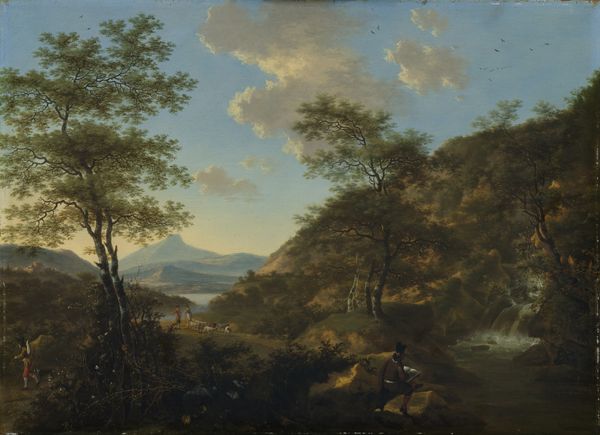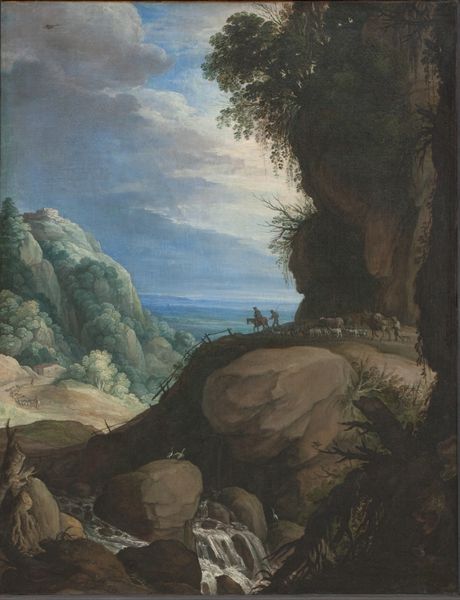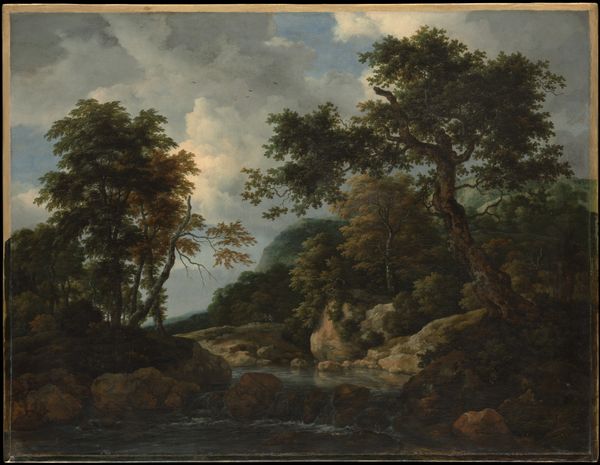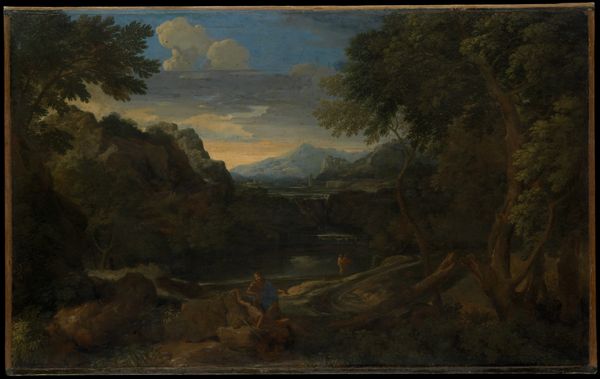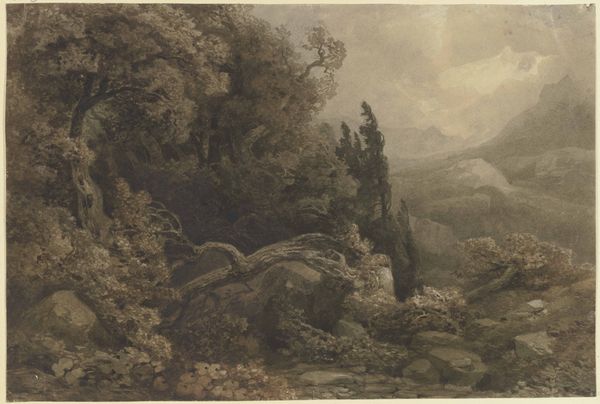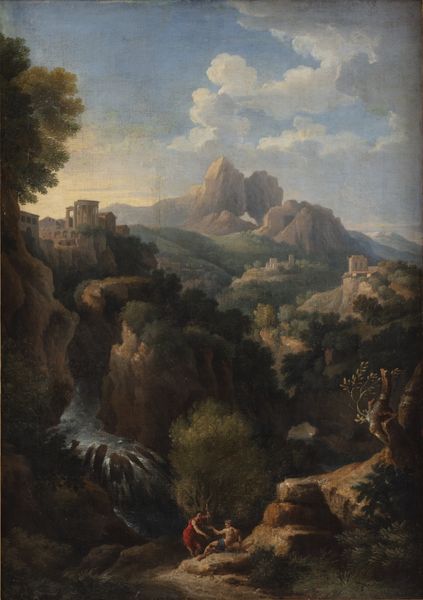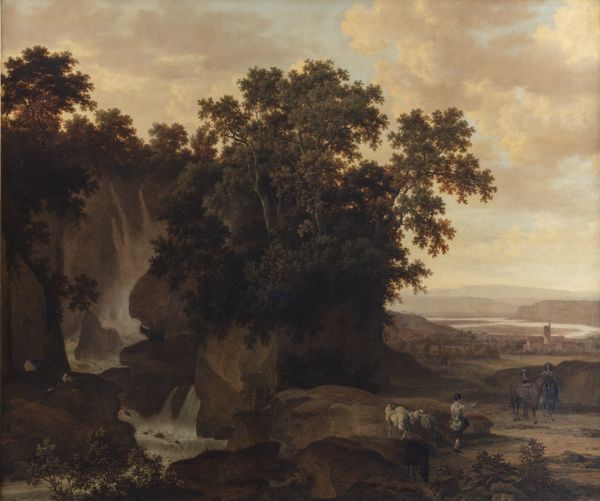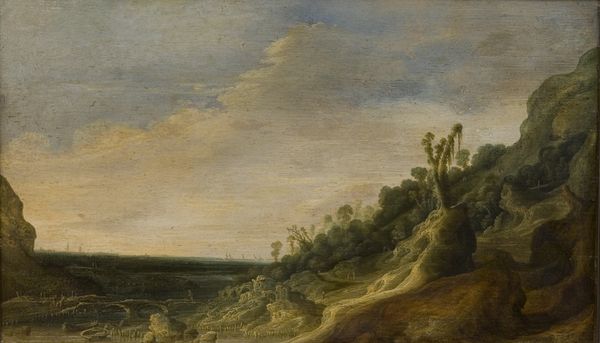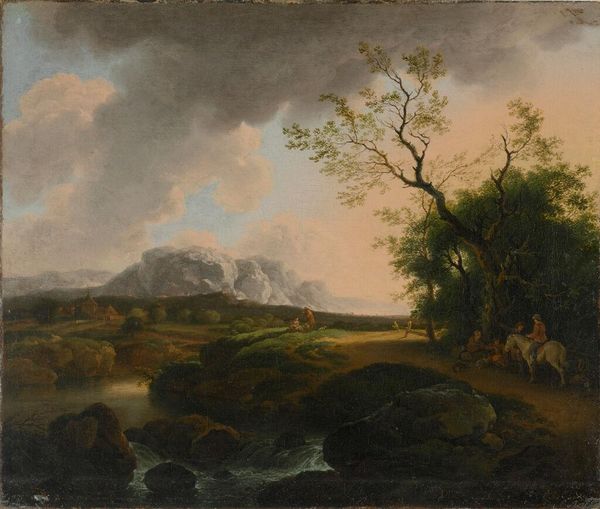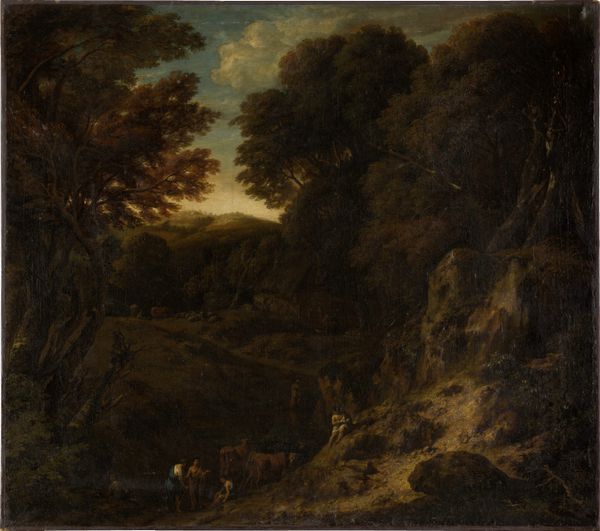
Mountain Landscape with a Couple of Horsemen in the Foreground 1647 - 1648
0:00
0:00
painting, oil-paint
#
baroque
#
dutch-golden-age
#
painting
#
oil-paint
#
landscape
#
figuration
#
oil painting
Dimensions: 112.5 cm (height) x 163 cm (width) (Netto)
Curator: Let’s turn our attention to this intriguing "Mountain Landscape with a Couple of Horsemen in the Foreground", an oil on canvas created around 1647-1648 by Allaert van Everdingen. What strikes you initially? Editor: The overall mood is quite somber, wouldn't you say? The monochromatic palette and dramatic rock formations convey a sense of nature's awesome, perhaps even threatening, power. Curator: Indeed. The brown tonality definitely influences our interpretation. Everdingen played a pivotal role in introducing Scandinavian motifs to Dutch art. Note the prevalence of northern scenery elements such as the rugged cliffs and the rushing waterfall. These elements reflect Everdingen's own experiences traveling in Norway and Sweden. They became part of the Dutch Golden Age landscape conventions. Editor: It is also interesting to observe that, while seemingly focused on the vastness of nature, Everdingen includes those tiny horsemen at the bottom, barely discernible amidst the rocks. What do they symbolize, dwarfed by the immensity of the landscape? Is there perhaps a political message embedded in it about man's place in the world? Curator: Absolutely! Dutch landscape paintings of this era often subtly infused moral messages within the depictions of nature. The diminutive scale of the horsemen accentuates human insignificance. It implies that humanity is fleeting in comparison to the enduring grandeur of the natural world. Perhaps it's a comment on the ephemeral nature of worldly power against the backdrop of geological time. Also note that this piece of landscape exemplifies some iconic baroquesque compositional devices of his era. Editor: I see that. So it acts as more than a visually appealing scene. It presents a thoughtful contemplation of human existence within the framework of natural forces. Considering the ongoing struggle for Dutch independence during this period, these elements can perhaps imply nationalistic concepts of survival as well. Curator: Precisely! These images played a crucial role in forming and expressing collective identity, aligning artistic expression with cultural narratives. What began as an evocation of Northern scenery soon acquired a new value within Dutch visual culture. Editor: Thinking about it now, it brings new layers of appreciation, especially given the social upheavals taking place at the time of the painting. It shows that art really holds up a mirror to historical context. Curator: Yes, looking at it now, seeing Everdingen through our contemporary eyes really adds a different nuance to our cultural memory of Dutch Golden age art.
Comments
No comments
Be the first to comment and join the conversation on the ultimate creative platform.
